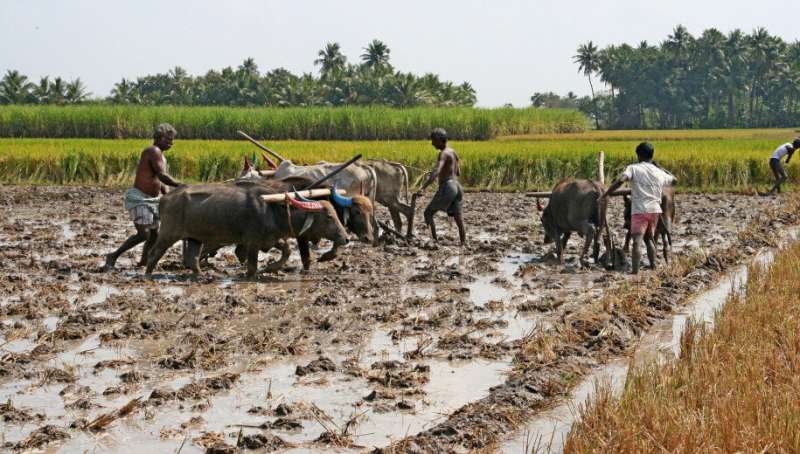How food production emissions are harming health

While increased agriculture production has reduced hunger, it is also linked to unhealthy diets and increased emissions that are severely affecting human health, says a study.
Published in Environmental Research Communications, the study focuses on the integrated assessment of global climate, air pollution and health impacts of food production and consumption.
"Changing global food consumption patterns towards healthier diets would see reductions in air pollution and [greenhouse gas] emissions, and dietary health benefits," says Chris Malley, lead author of the study and senior research fellow at the Stockholm Environment Institute's (SEI) office at the University of York in the UK.
As many as 640,000 premature deaths are associated with high red meat consumption in East and South-East Asia, according to the study. An estimated 4.1 million deaths in 2018 were associated with dietary health risks, 6.0 million with overweight or obesity, and 730,000 infant deaths resulted from malnutrition.
The study estimated that air pollution caused by food production is linked to a host of health problems and estimated to result in about 530,000 premature deaths per year globally. About two-thirds of these stem from ammonia emissions and the rest mainly come from agricultural residue burning.
"Increased fertilizer usage releases carbon dioxide emissions during energy intensive production, and nitrous oxides, nitrogen oxides and ammonia emissions during application on farmland," says Lisa Emberson, professor in environmental science at the University of York in UK.
"Secondly, increased density of livestockto meet growing demand for meat is leading to increases in methane via enteric fermentation, and ammonia emissions via manure management."
As part of the study, scientists developed an open source modeling tool within SEI's Integrated Climate and Development Planning Initiative.
"It allows national planners to undertake integrated assessments of the health impacts of food production and consumption alongside greenhouse gas and air pollutant emissions as they undertake their climate change mitigation planning," Malley explains.
The tool estimates emissions of greenhouse gases and air pollutants from the agricultural sector, and links this back to the drivers of agricultural production, average daily calorie intake, imports and exports of different food products.
"This link to food consumption enables us to estimate the health impacts—malnutrition, obesity and other dietary risk factors," says Malley. "We can see that the highest burden per 100,000 of the population occurs in Eastern Europe and Central Asia followed by North America."
The tool can also be used to look at how food demand and agricultural systems may change in the future and how these impacts could be mitigated.
"There's huge opportunity to reduce agriculture's impact on climate change by reducing food waste, not just at the point of consumption, but in retail, processing and from post-harvest losses on the farm," adds Malley.
Only six countries (Bolivia, El Salvador, Botswana, Rwanda, Pakistan and Timor-Leste) had included agriculture as a particular focus area for mitigation in the Intended Nationally Determined Contributions, which served as the basis for negotiations that led to the Paris Agreement on Climate Change in 2015.
"There is substantial scope to also increase the mitigation in agriculture. Of the 530,000 premature deaths resulting from agriculture air pollution exposure, 85 percent occur in Asia. We know that Asia has the largest overall health burden due to air pollution in general and our study shows that agriculture is a significant source," says Malley.
There is growing recognition that climate action in the agricultural sector can be transformative in the response to climate change and in achieving health and other 2030 Sustainable Development Goals (SDGs).
"The Framework Convention on Climate Change must give more priority to reducing methane because it has cost-effective short-term co-benefits for health and crops protection, and it is important to limit short term temperature rise," says Rob Maas, senior scientific advisor on Integrated Assessments at RIVM (National Institute for Public Health and the Environment) in the Netherlands.
More information: Christopher S Malley et al, Integrated assessment of global climate, air pollution, and dietary, malnutrition and obesity health impacts of food production and consumption between 2014 and 2018, Environmental Research Communications (2021). DOI: 10.1088/2515-7620/ac0af9
Provided by SciDev.Net


















